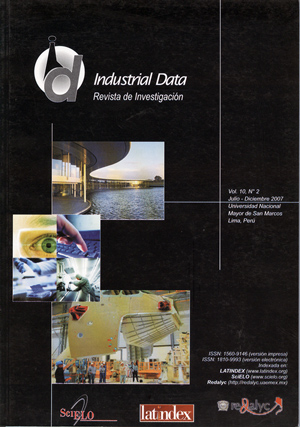Automatic classification of products in the industry via invariant boundary moments
DOI:
https://doi.org/10.15381/idata.v10i2.6256Keywords:
Artificial intelligence, invariant pattern recognition, cybernetic vision, boundary moments, automatic classification, industrial applications.Abstract
The technique of the Invariant Boundary Moments (IBM) is applied to the automatic classification of two different randomly selected objects, independently of their size, position and orientation. It is shown that if the objects differ only in position and orientation (size is maintained), the power of the IBM is optimum; however when variations in size are included, overlapping results in the IBM show up, placing strong limitations to their use as a classifier tool, in cases like these a predefined margin of tolerance must be introduced.
Downloads
Downloads
Published
Issue
Section
License
Copyright (c) 2007 Javier Montenegro Joo

This work is licensed under a Creative Commons Attribution-NonCommercial-ShareAlike 4.0 International License.
AUTHORS RETAIN THEIR RIGHTS:
a. Authors retain their trade mark rights and patent, and also on any process or procedure described in the article.
b. Authors retain their right to share, copy, distribute, perform and publicly communicate their article (eg, to place their article in an institutional repository or publish it in a book), with an acknowledgment of its initial publication in the INDUSTRIAL DATA.
c. Authors retain theirs right to make a subsequent publication of their work, to use the article or any part thereof (eg a compilation of his papers, lecture notes, thesis, or a book), always indicating the source of publication (the originator of the work, journal, volume, number and date).






